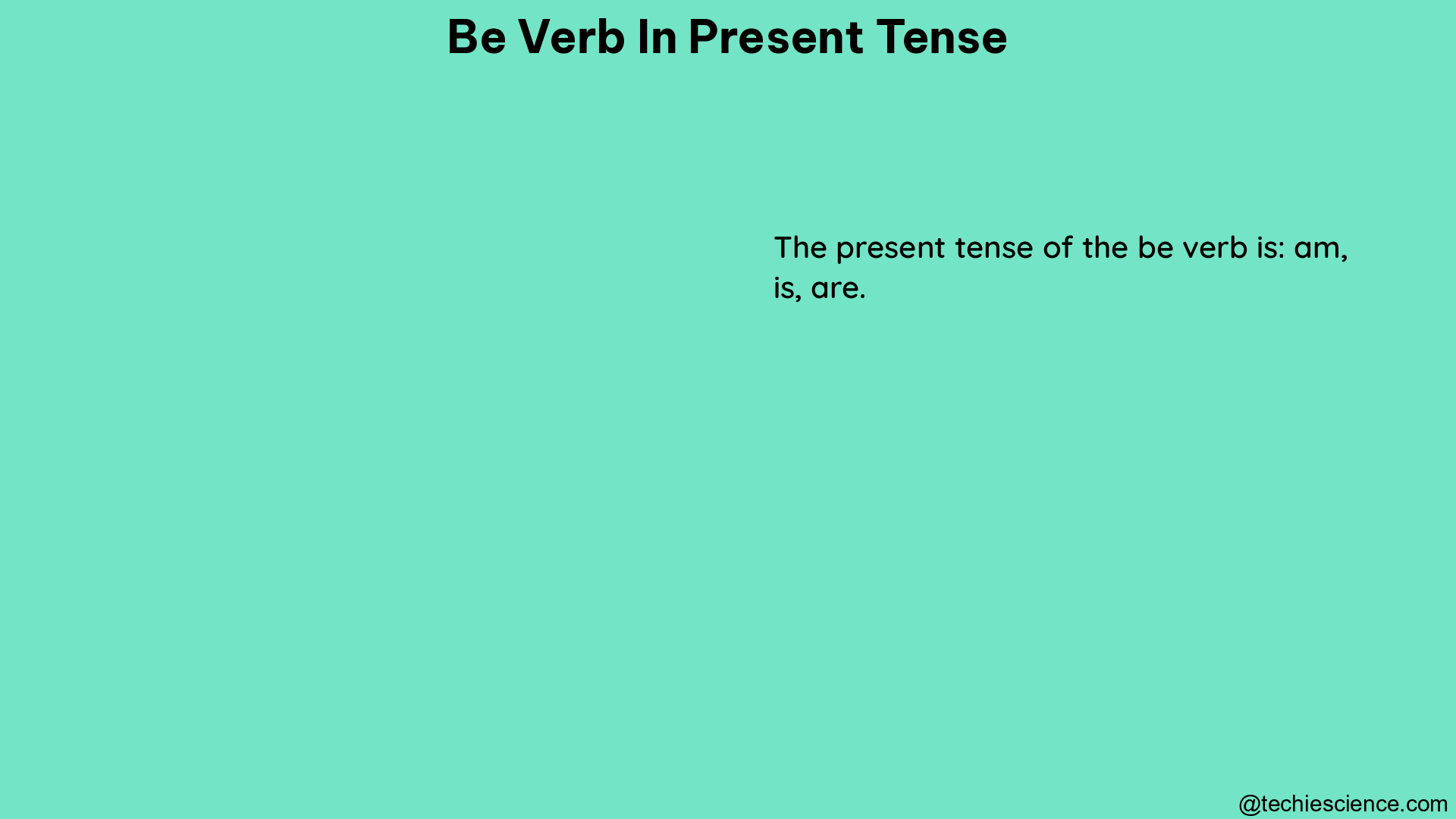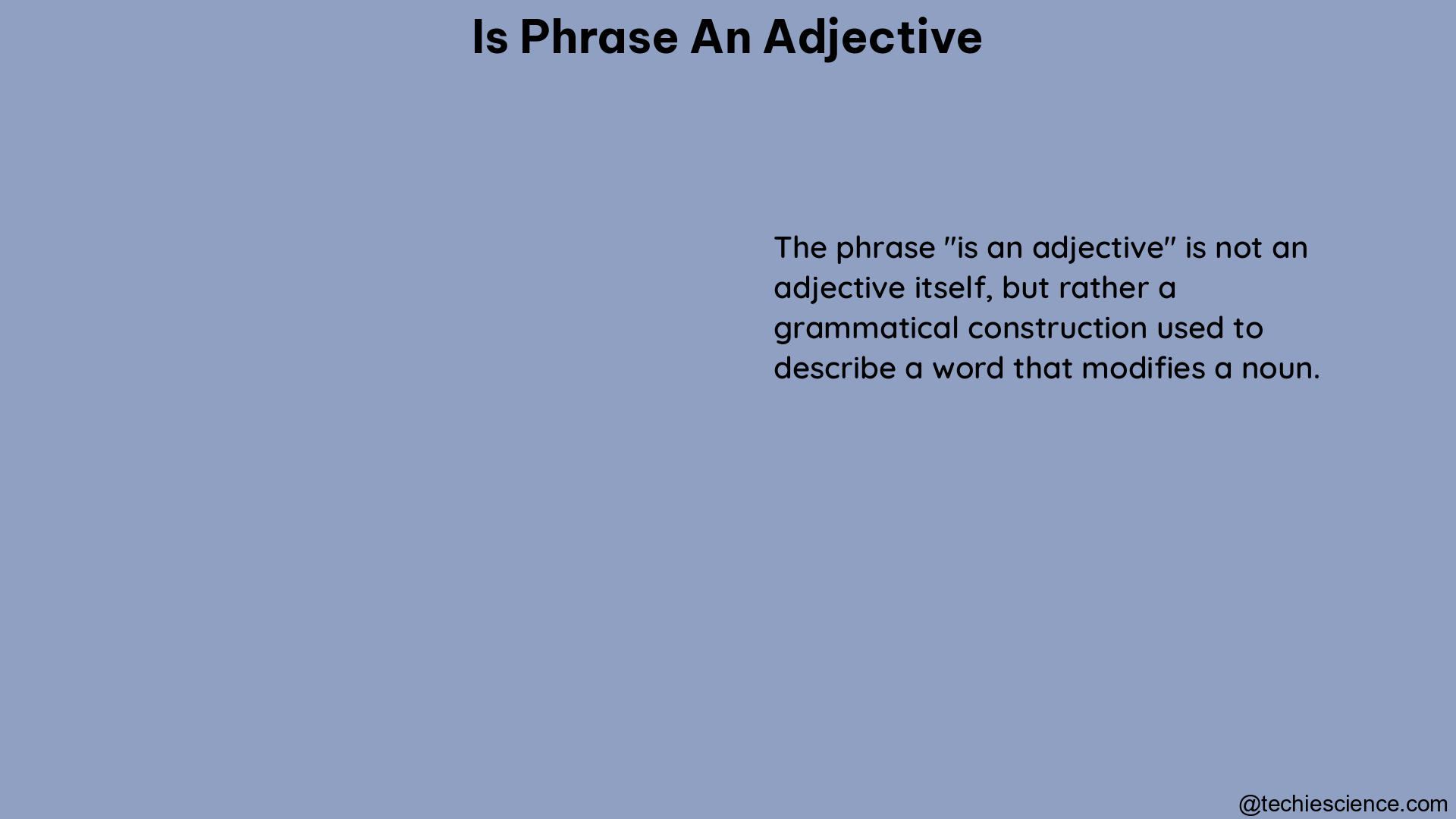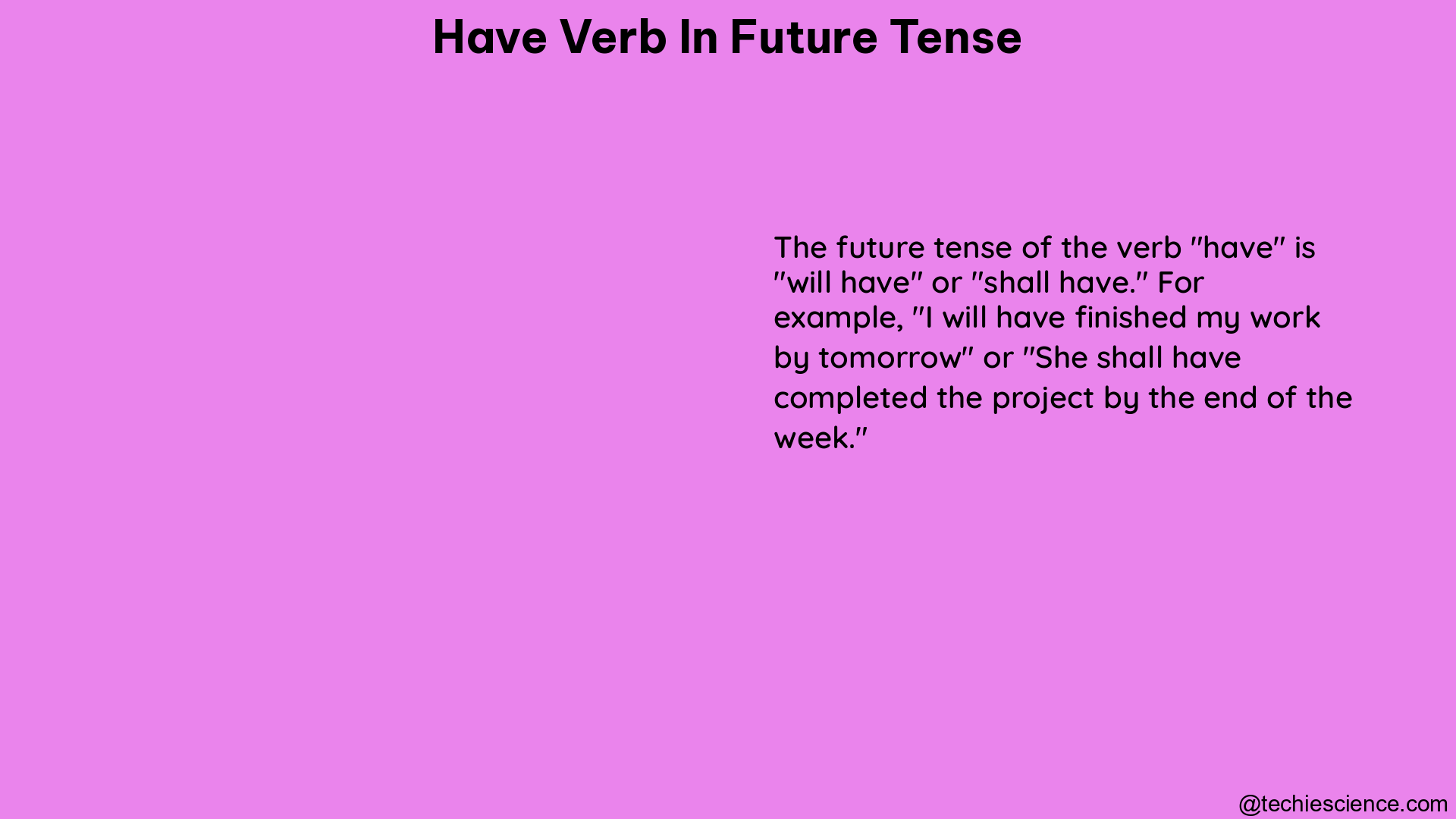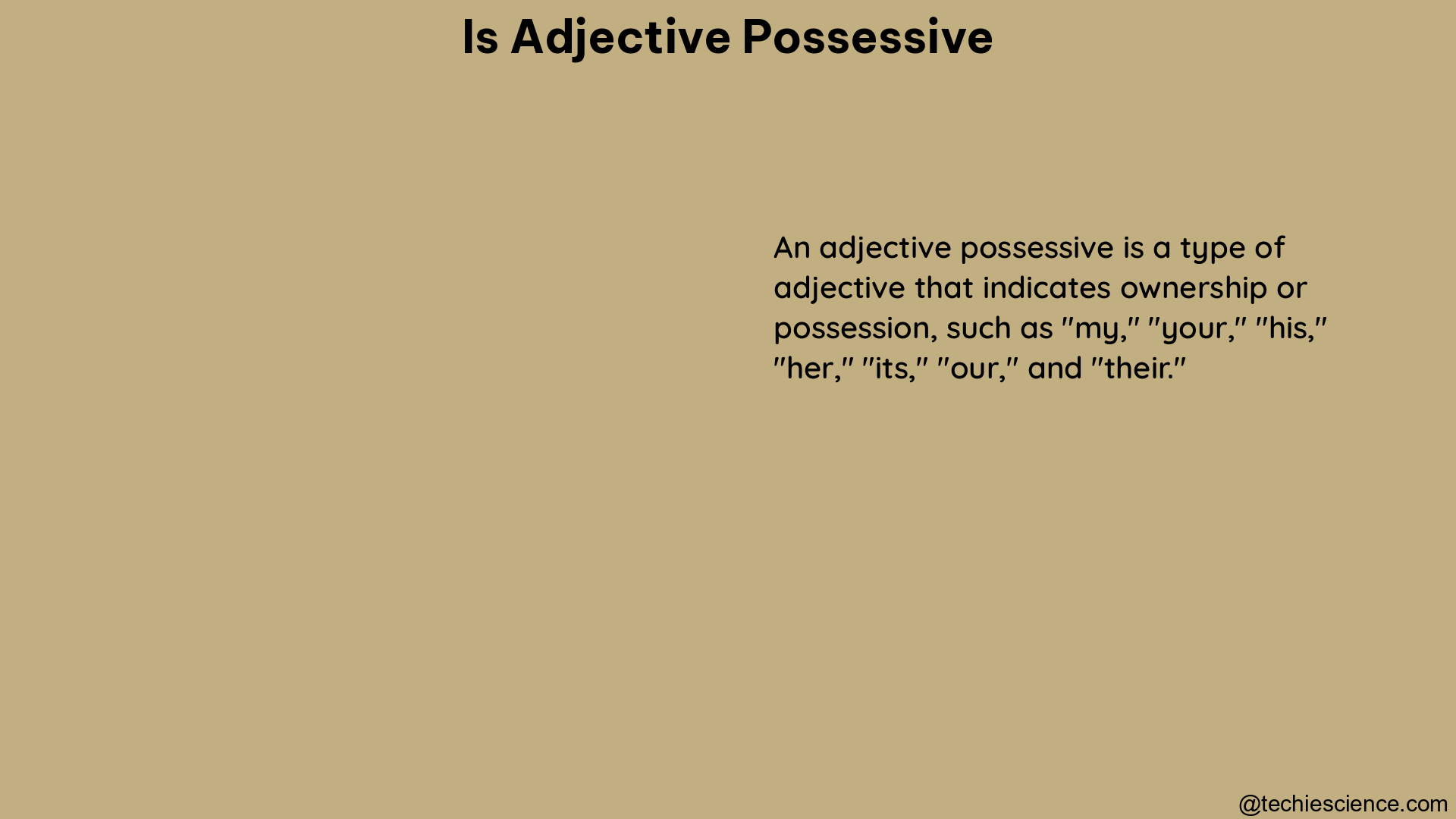Interrogative adjectives are a crucial component of the English language, enabling us to gather specific information about nouns and pronouns. These versatile words play a vital role in effective communication, allowing us to engage in meaningful conversations and seek the details we need. In this comprehensive guide, we will delve into the intricacies of interrogative adjectives, exploring their definitions, usage, and best practices to help you become a master of the art of asking questions.
Understanding Interrogative Adjectives
Interrogative adjectives are words that modify nouns or pronouns to ask a question. They are used to gather specific information about the noun or pronoun they modify. The three main interrogative adjectives in English are:
- What: Used to ask for general information about a noun or pronoun.
-
Example: “What book are you reading?”
-
Which: Used to ask for specific information about a noun or pronoun from a set of options.
-
Example: “Which movie do you want to watch?”
-
Whose: Used to ask about possession or ownership.
- Example: “Whose car is parked outside?”
Interrogative Adjectives in Action
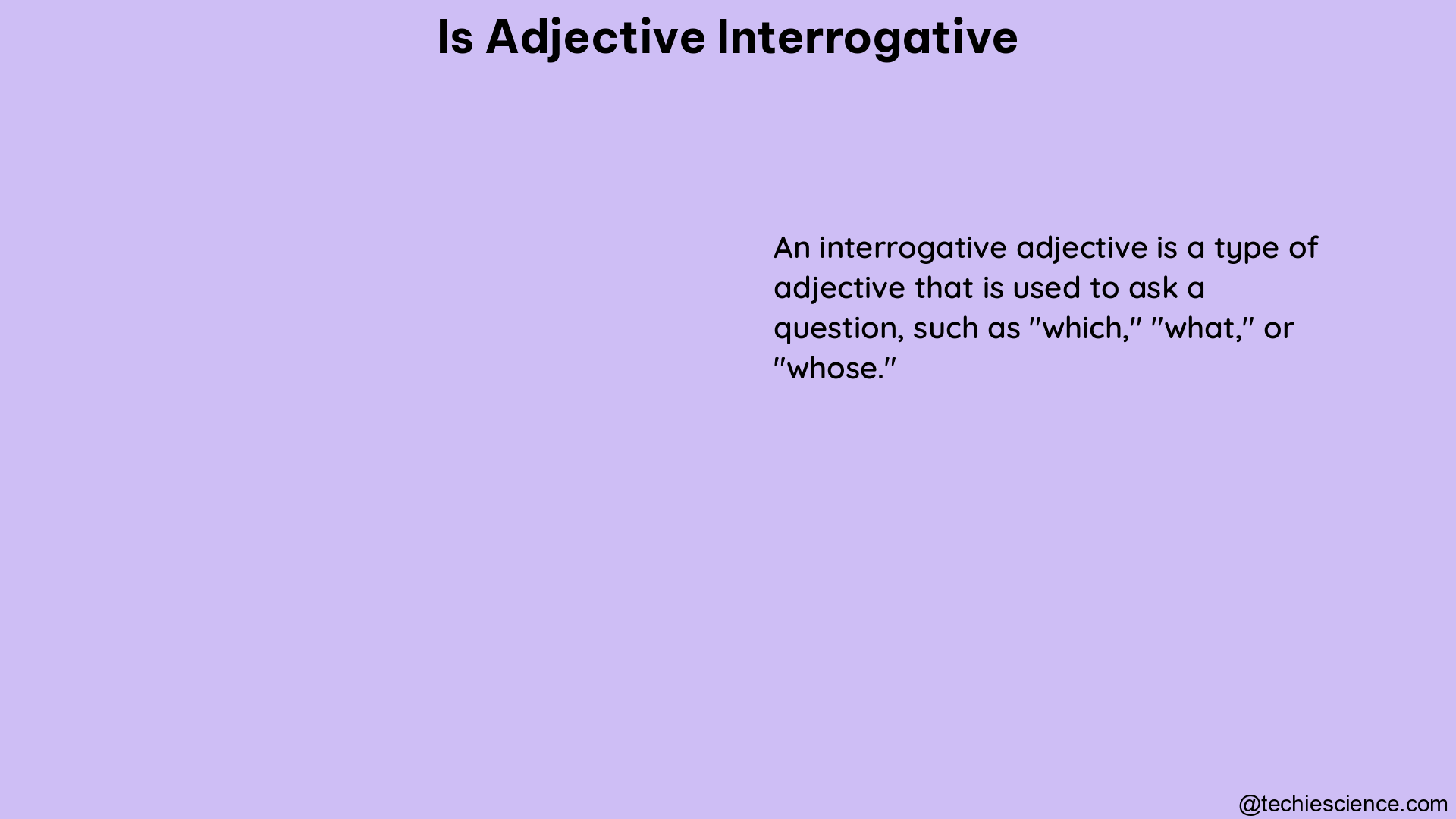
Let’s explore some examples of interrogative adjectives in use:
- What kind of music do you like?
- Which city do you prefer?
- Whose phone is ringing?
In these sentences, the interrogative adjectives “what,” “which,” and “whose” are used to gather specific information about the nouns they modify.
Differentiating Interrogative Adjectives and Interrogative Pronouns
It’s important to understand the distinction between interrogative adjectives and interrogative pronouns. Interrogative adjectives modify nouns or pronouns, whereas interrogative pronouns replace nouns in a sentence. Consider the following examples:
- What book are you reading? (Interrogative adjective)
- What is your favorite color? (Interrogative pronoun)
In the first example, the interrogative adjective “what” modifies the noun “book,” while in the second example, the interrogative pronoun “what” replaces the noun.
The Significance of Interrogative Adjectives
Interrogative adjectives play a crucial role in forming questions and seeking information. They are essential for engaging in meaningful conversations and effective communication. By using interrogative adjectives, you can:
- Gather Specific Information: Interrogative adjectives allow you to ask targeted questions and obtain the details you need.
- Facilitate Effective Communication: The use of interrogative adjectives helps to ensure that your questions are clear and understood by your conversation partner.
- Enhance Conversational Dynamics: Interrogative adjectives can make your questions more engaging and encourage your conversation partner to provide more detailed responses.
Rules and Best Practices for Using Interrogative Adjectives
To ensure the proper and effective use of interrogative adjectives, consider the following rules and best practices:
- Placement: Interrogative adjectives are typically used at the beginning of a sentence.
- Indirect Questions: Interrogative adjectives can also be used in indirect questions, such as “I wonder which movie you want to watch.”
- Distinguishing “Whose” and “Who’s”: Be mindful of the difference between “whose” (used to ask about possession or ownership) and “who’s” (a contraction of “who is” or “who has”).
Frequently Asked Questions (FAQs)
- What is an interrogative adjective?
-
An interrogative adjective is a word that modifies a noun or pronoun to ask a question.
-
What are the examples of interrogative adjectives?
-
The main examples of interrogative adjectives in English are “what,” “which,” and “whose.”
-
What is the difference between interrogative adjectives and interrogative pronouns?
- Interrogative adjectives modify nouns or pronouns, while interrogative pronouns replace nouns in a sentence.
References
- Byju’s. (n.d.). Interrogative Adjectives – Explore Meaning, Definition, Usage and Examples. Retrieved from https://byjus.com/english/interrogative-adjectives/
- Thesaurus. (2021, August 3). What Are Interrogative Adjectives And How Do You Use Them? Retrieved from https://www.thesaurus.com/e/grammar/interrogative-adjectives/
- GeeksforGeeks. (2023, November 30). Interrogative Adjective – Meaning, Definition and Examples. Retrieved from https://www.geeksforgeeks.org/interrogative-adjective-meaning-definition-and-examples/
